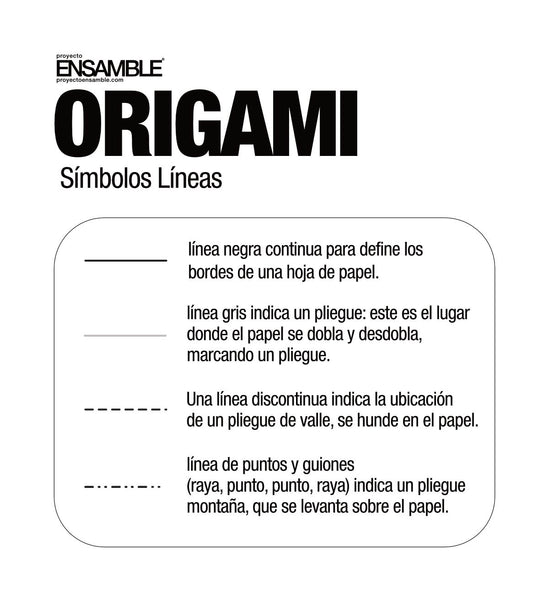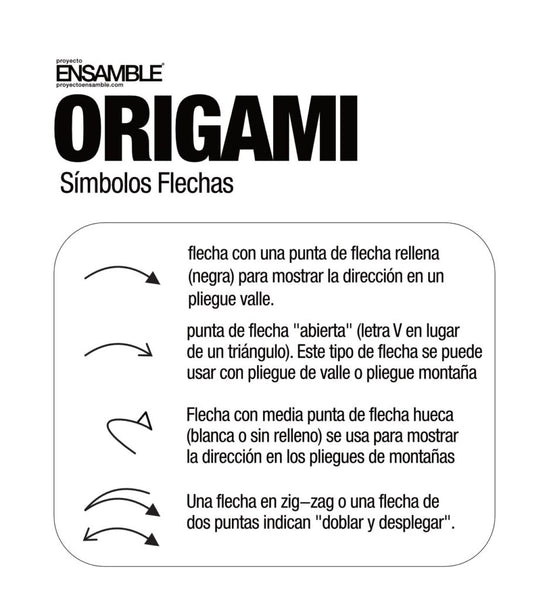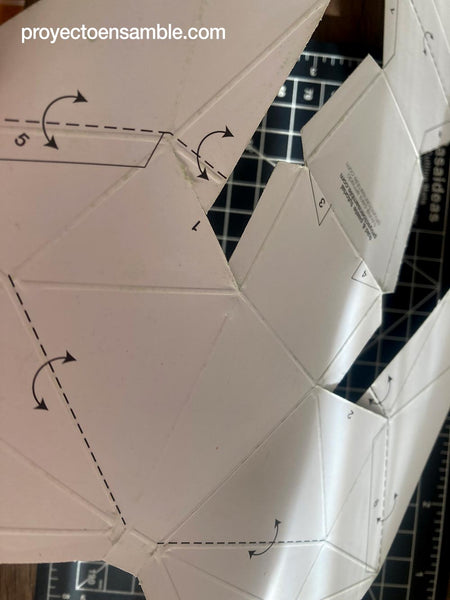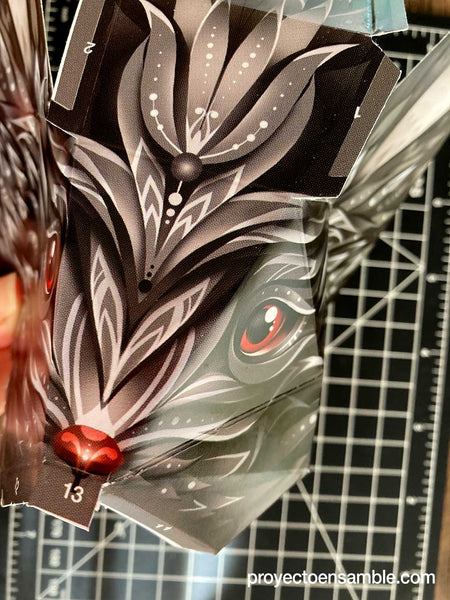Origami is one of the oldest and most popular Japanese art forms used throughout the world. This consists of paper folding techniques used to create beautiful shapes. At the same time, this technique needs the support of an origami tutorial that is easy to understand.
This time we will define some origami symbols, lines and arrows that are commonly used in origami books and diagrams . Many artists who use this technique use creative ways to describe how a piece of paper must be folded, to generate volume.
So in this tutorial for easy origami we will start by showing you how some basic symbols are used in origami and the way in which we have applied these in our templates to guide you in assembling our paper characters. Origami or paper folding as some people call it, is an amazing activity to relax and rest your mind. You can do it anywhere, anytime!
Origami Symbols, Lines

In the language of origami, the lines generally represent cuts or folds, the folds can be mountain or valley type, in short, they rise or sink on the paper.
The basics for understanding folding instructions for origami are as follows: A solid black line is used to define the edges of a sheet of paper. A gray line indicates a fold line: this is the place where the paper has been folded and unfolded, marking a crease. A dashed line indicates the location of a valley fold, which sinks into the paper. While a line of dots and dashes (Dash-dot-dot-dash) indicates the location of a mountain fold, which rises above the paper. Review the diagram below so you understand better.
Origami Symbols: Arrows

An arrow with a filled (black) arrowhead is generally used to show directionality in a valley fold. Some origami artists use an "open" arrowhead (letter V instead of a triangle). This type of arrow can be used with a valley crease or a mountain crease. An arrow with a half hollow arrowhead (it is white or unfilled) is used to show directionality in mountain folds. A zig-zag arrow or a double-headed arrow indicates “fold and unfold.”
Symbology applied to our templates , tutorial for easy origami
We know that these instructions can be very confusing, especially for people who are just starting out in the technique, which is why we have designed a way to communicate the assembly instructions for our templates that is as simple as possible.
For the example we will use the template from the Mr. Rabbit series . First of all when you face one of our templates from the right (the part printed in full color). The folds are all mountain-type, this means that they rise towards the observer (photo 2). Except for those marked with dotted lines and dashes on the back (photo 3), those lines that include the arrows that indicate the direction of the fold are mountain-type folds but seen from the back of the template (the part that is not printed, photo 4), this means that from the right these marks indicate that the folds are valley type.
By following these instructions, when you face the template from the right side, once you have folded it, you should have mountain and valley folds, like in the last photo. To finally guide you through the numbers to paste.






